Discover 11 hidden attractions, cool sights, and unusual things to do in Vigo (Spain). Don't miss out on these must-see attractions: Castro fortress, Co-Cathedral of Santa María, and MARCO. Also, be sure to include Port of Vigo in your itinerary.
Below, you can find the list of the most amazing places you should visit in Vigo (Galicia).
Table of Contents
Castro fortress
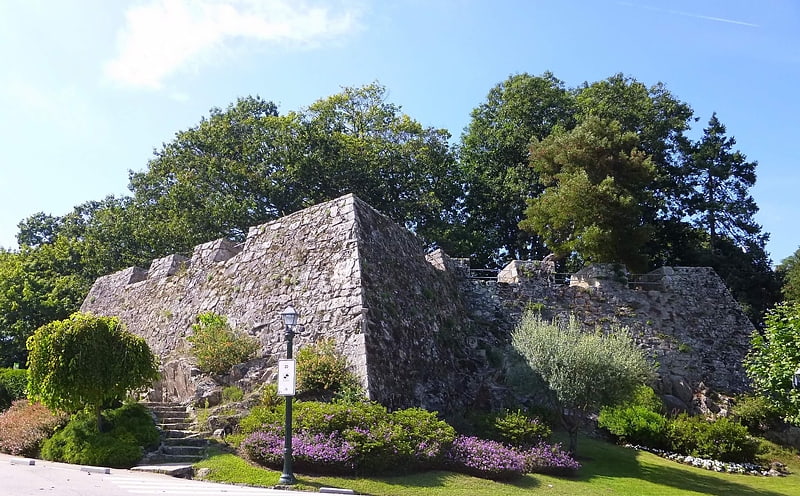
Also known as: Fortaleza del Castro
The Fortress of O Castro is a hilltop fortress in Vigo, Spain built in 1665 during the Portuguese Restoration War in order to protect the city from the continuous raids by the British Royal Navy, allies of Portugal.
Built on the hill of the same name, the defensive system of the city consisted of the fortresses of O Castro and San Sebastián and the now disappeared city wall. The city wall had an irregular shape due to the orography of the city, it was constructed by the Engineer Colonel Fernando de Gourannanbergue and maestre de campo Diego Arias Taboada to link the two fortresses. Despite this effort to provide security to the city, documents from that time say that this defensive system was ineffective as it could not impede landings further along the coast.
After several attempts to improve the defenses of the city, Vigo was looted again by British navy on the 23-24 October 1702 during Battle of Vigo Bay at the War of the Spanish Succession. The fortress and Vigo fell once more to a British force during the War of the Quadruple Alliance in October 1719.
In 1809, the fortress was occupied by the French army during Peninsular War; on 28 March that year the fortress was reconquered following an uprising by people of Vigo, because of the city was given the honorific title of "the faithful, loyal and courageous city of Vigo" the following year.
Nowadays the fortress is one of the preferred sites for people to take a walk in Vigo, because his beautiful gardens, open spaces, fonts and also the privileged views.[1]
Co-Cathedral of Santa María
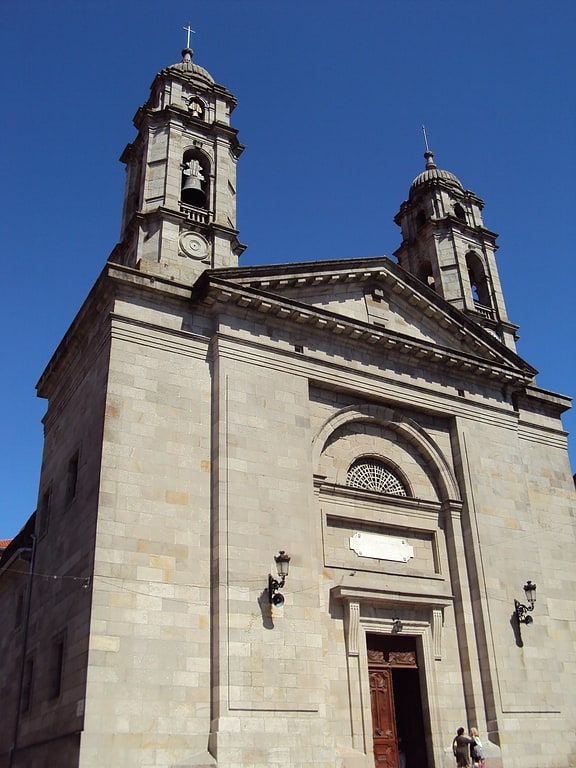
Also known as: Concatedral de Santa María de Vigo
Cathedral in Vigo, Spain. Co-Cathedral of Santa María, also known as Vigo Co-Cathedral, is a Spanish religious building. It is co-cathedral with Tui Cathedral. The original church was rebuilt in neo-classical style after being burnt down by Francis Drake's soldiers in 1585.[2]
Address: Praza Igrexa, 5-7, 36202 Vigo (Vigo)
MARCO
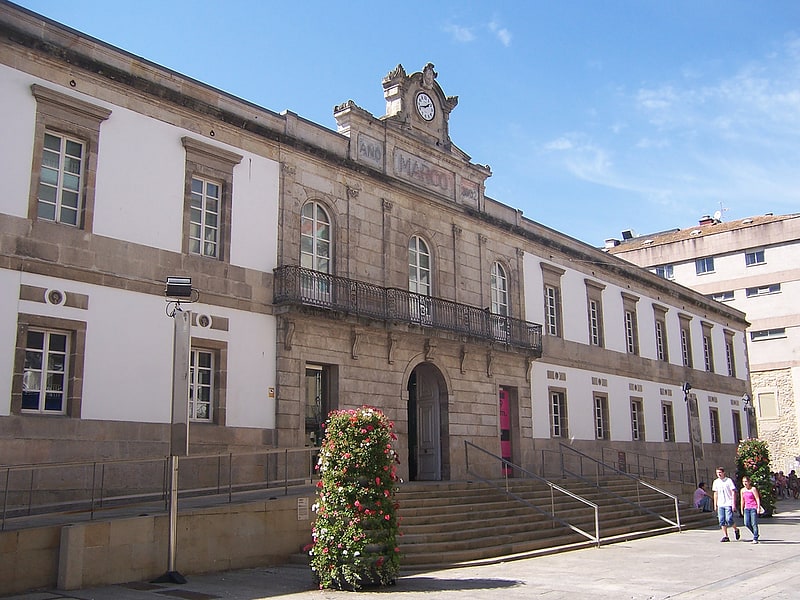
Also known as: Museo de Arte Contemporáneo de Vigo
Museum in Vigo, Spain. The Vigo Museum of Contemporary Art is an art museum in Vigo, Spain. It displays changing exhibitions of contemporary art, but has no permanent collection.[3]
Address: Rúa do Príncipe, 54, 36202 Vigo (Vigo)
Port of Vigo
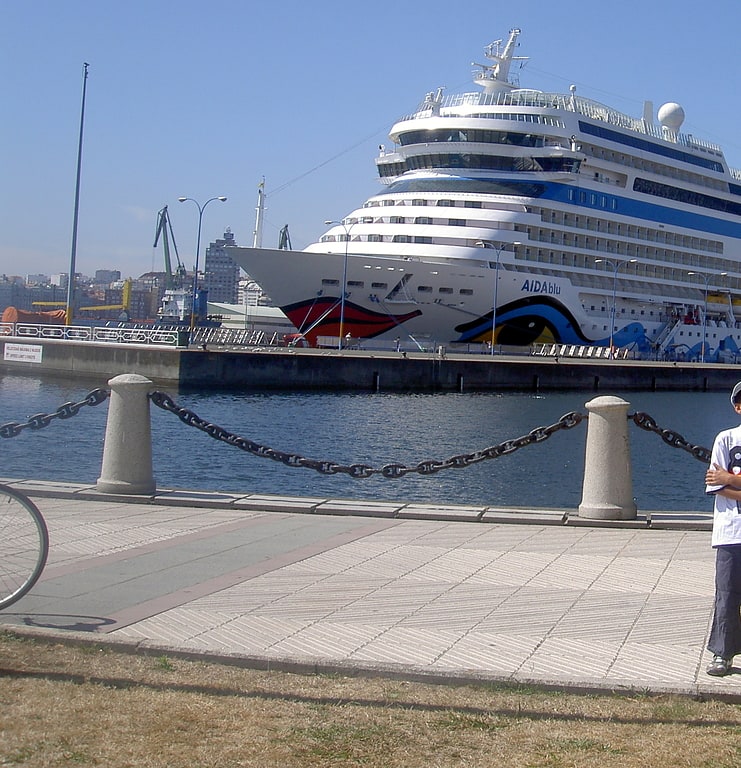
Also known as: Puerto de Vigo
Port of Vigo located in Vigo, Pontevedra, Galicia, Spain is the biggest fishing port in the world and one of the busiest in transportation. It is home of the world's largest fishing company, Pescanova. In 2008, unloaded fish reached 751,971 tonnes.
Vigo is the base for the big fishing companies which have prominent presence in countries such as Namibia, South Africa, Mozambique, Australia, Argentina, the Falkland Islands, Chile and Peru, among others. Fish is sent all over Spain and abroad to countries like Portugal, Italy, France and other more distant markets including Asia.
In Vigo, important international trade fairs are held, like Conxemar, an annual event dedicated to frozen fish products. "Navalia shipbuilding Exhibition"takes place every second year.[4]
Moaña
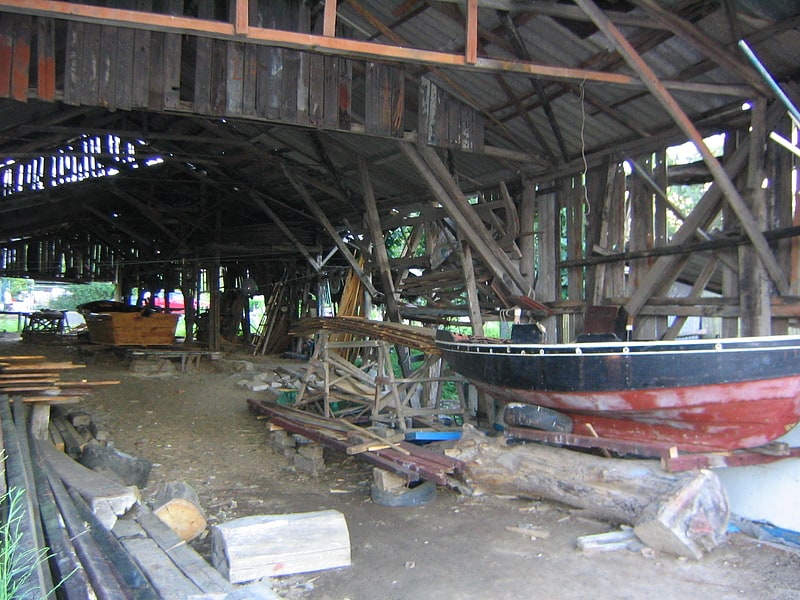
Municipality in Spain. Moaña is a municipality of 18,709 inhabitants located in Galicia, Spain in the province of Pontevedra. It is one of the five municipalities with Bueu, Cangas do Morrazo, Marin and Vilaboa that forms the peninsula of O Morrazo. This peninsula separates the Ria of Vigo from the Ria of Pontevedra. The coast of Moaña has several beaches and the area combines tourism with traditional seafood production. The surrounding sea contains sea farms where mussels, oysters and other species are cultivated and it is an idyllic place for practicing sea sports activities. The Strait of Rande, where the Rande Bridge now connects Moaña with the municipality of Redondela, was the scene of the Battle of Vigo Bay. Moaña has developed a significant cultural life with the highlights of this being the Interceltic Festival of Morrazo, the Week of Carnival and numerous other local feasts. Social movements were relevant in Moaña in the first half of the 20th century where the presence of the CNT was significant. In fact, the current local pub/bar for retired people was the head office of this syndicate in Moaña during the Second Spanish Republic.[5]
Garcia Barbon Theatre
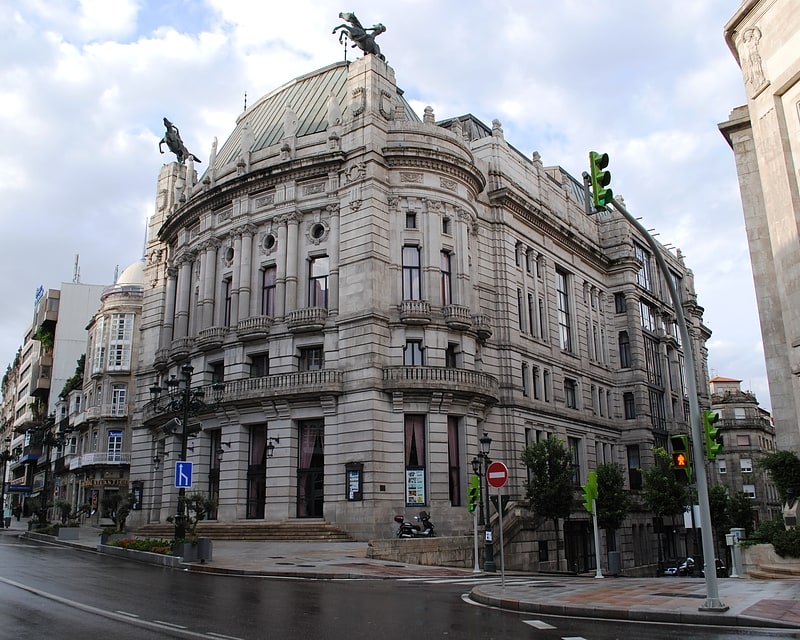
Also known as: Teatro Afundación
Theatre in Vigo, Spain. Garcia Barbon Theatre, officially Afundacion Vigo Theatre, was built in the late nineteenth century in the centre of Vigo, a city in Northwestern Pontevedra, in Galicia, Spain. Sponsors included an enthusiastic group of locals who wanted to promote theatrical culture in the city. After years with a lot of economic problems, the theatre was opened on July 15 of 1900 as "Rosalía de Castro Theatre" and its first performance the opera Aida.
Years after was inaugurated and after a period of economic failure, the theater went bankrupt. It was a store for a short period of time before popular support and benefactor José García Barbon recovered the property and returned it to play representations.
On February 8, 1910, after the function in Carnival Tuesday, a fire completely charred the building, leaving the city without a theater again. Three years later, thanks to José García Barbon’s nieces who decided to continue the work of his uncle. The Galician architect Antonio Palacios was responsible for the construction of the new theatre building. Described as Neo-Baroque, a mainstream style in the beginning of the twentieth century, it was inspired by the Paris Opera of Charles Garnier and the Arriaga Theatre of Bilbao.
The new theatre was opened on April 23, 1927, under the name of Garcia Barbon theatre but it was not only a theatre, it was also auditorium and Casino, where people can see different kinds of show and becoming a meeting point.
During the seventies the building was bought by "Caja de Ahorros Municipal de Vigo" a regional Savings Bank from the same city. This entity spends more than 6 million of Euros in an important rehabilitation done by the architect Desiderio Pernas, expanding the theatre, creating a library in a new top floor and giving a new image to the building.
On March 22 of 1984 the building was reopened as the “Centro Cultural Caixanova” to be the bigger project conducted by the entity.[6]
Address: Rúa Policarpo Sanz, 24-26, 36202 Vigo (Santiago de Vigo)
Rías Baixas
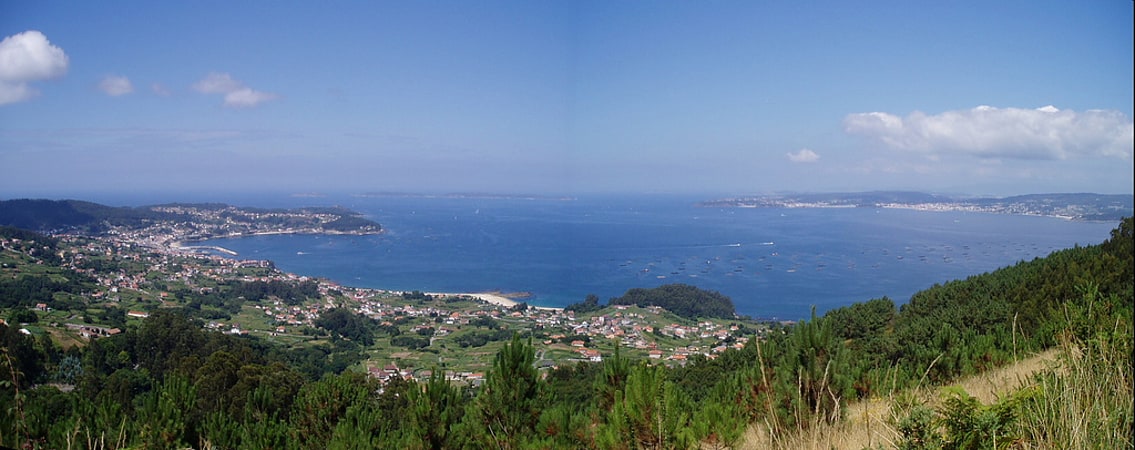
Also known as: Rías Bajas
The Rías Baixas are a series of four estuarine inlets located on the southwestern coast of Galicia, Spain. They are the Ría de Muros e Noia, the Ría de Arousa, the Ría de Pontevedra, and the Ría de Vigo. The northernmost Rías Baixas begin below Cape Finisterre while the southernmost rias border the Portuguese coast, taking up the southern part of the Province of Coruña and the entire Province of Pontevedra. Its capital is the city of Pontevedra. Due to unique conditions, the Rías Baixas are rich in marine life which helps the fishing and aquaculture industry of the area. Beaches, marinas, distinctive towns, and plenty of water activities also attract tourists, providing another source of income.[7]
Praia de Samil
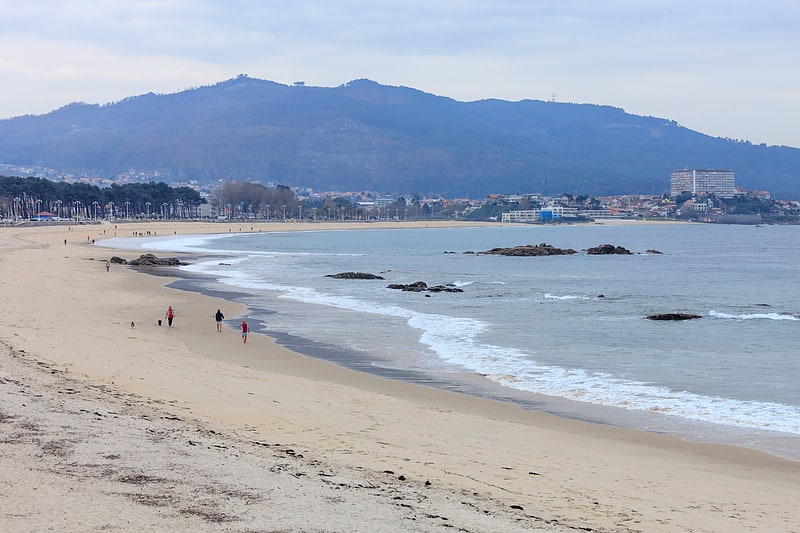
Also known as: Playa de Samil
Sandy urban beach with a paved promenade. Samil Beach is the principal beach of Vigo in Galicia in north-west Spain.
Located near the Cíes Islands, the mouth of the river Lagares is found at its west end. The beach is 1,700 metres (5,600 ft) long and is connected with the urban public transport, and disabled access is available during the summer. Several Vitrasa urban public transport lines connect it with different areas of the city. Those lines are: L10, C15A, C15B and C15C during the whole year, C3 during the summer, and the night lines CN1 and CN2.
Around Samil, several services have been created: museums (such as "Museo do Mar" and "Verbum"), several catering premises, clubs and cafés. Its promenade covers the littoral zone and it offers several leisure facilities (three public swimming pools, garden areas, basketball courts, a mini-soccer court, tennis and paddle courts, a skating rink, and terraces).[8]
Cangas
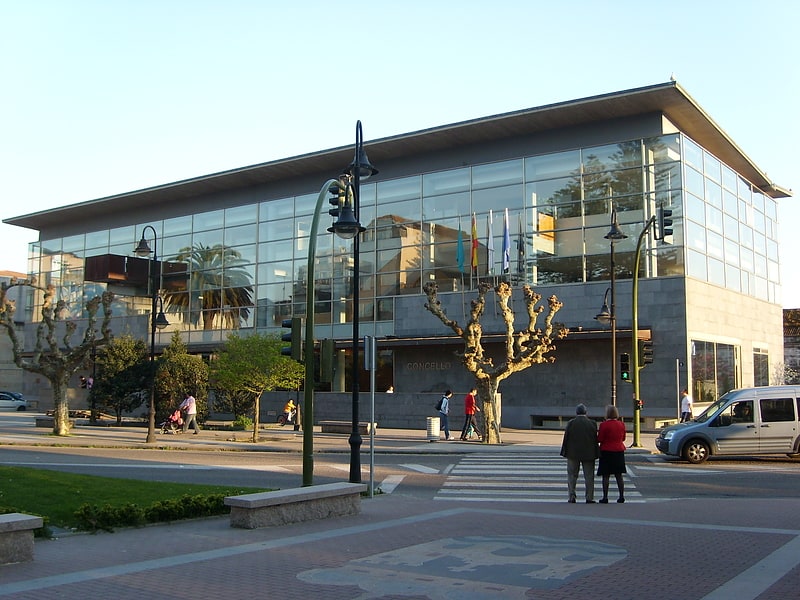
Town in Spain. Cangas, also known as Cangas do Morrazo, is a seaside resort in southwestern Galicia, Spain. It is both a town and municipality in the province of Pontevedra. Its area is about 38,1 km² and has a population of around 26,087 inhabitants.[9]
Museo Do Mar De Galicia
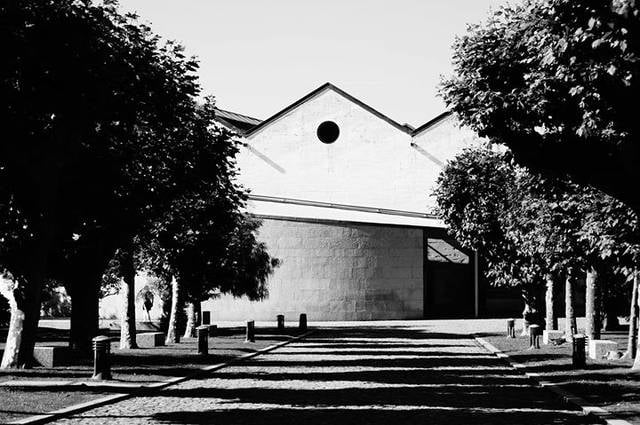
Museum, Specialty museum
Address: Av. da Atlántida, 160, 36208 Vigo
Vigozoo

Aquarium, Zoo
Address: Subida da Madroa, 36215 Vigo (Teis)